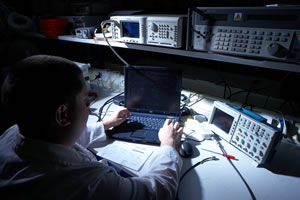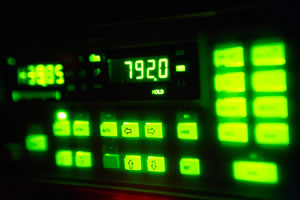What is calibration?
Calibration is the activity of checking, by comparison with a standard, the accuracy of a measuring instrument of any type. It may also include adjustment of the instrument to bring it into alignment with the standard.
Does calibration affect me?
Yes: even the most precise measurement instrument is of no use if you cannot be sure that it is reading accurately – or, more realistically, that you know what the error of measurement is.

How is calibration done?
By checking the instrument against known reference standards that have themselves been calibrated in a chain of measurements that can be traced back to agreed International Standards – the system of SI units – for example the Volt; Ampere; Watt; metre; litre. (These standards have replaced the “National Standards” that were for many years the traceability requirement).
My company needs to meet the requirements of QA standard ISO9001. Is calibration required?
Yes: Demonstrable control of measurement and test equipment is required. Part of this is ensuring that instruments are calibrated on a rational periodic cycle, and that records are maintained and reviewed.

How do I know that my calibration is “traceable”?
By using a calibration laboratory that is accredited to international standard ISO17025. In the UK, the Teddington-based United Kingdom Accreditation Service (UKAS) is the certification body authorised to accredit laboratories to this standard. ISO17025 requires laboratories to demonstrate competence in both the technical aspects of the measurements and in the quality assurance aspects that ensure that you will get the service that you ask for if you have specific requirements, or will ensure that you get a useful and valid certificate and set of results if you wish to leave the detailed requirements to the laboratory.
How often should my instrument be calibrated?
This depends on how important the measurements being made are to your product or service; the degree of wear and tear that the instrument will experience in service; the stability of the instrument itself and a review of the calibration records that already exist to determine whether adjustment has been needed previously. OTC recommends a starting periodicity of 12 months for most instruments with an increase in calibration frequency (to 6 or 9 months) if adjustment is required, and a reduction in periodicity to 2 years after a sequence of annual calibrations has shown that adjustment has not been needed.
Do I need more than just a certificate?
It is very difficult to judge the performance of your instrument without a set of calibration results. With standard certificates, these results should have been compared to the published specification by the calibration laboratory and will normally be categorised to show conformance to specification. ISO17025 certificates often give the results in more detail, with an indication of any results that fall outside specification.
Click here for detail on Photometric Radiometric Calibration Services
Click here for detail on Electrical Electronic Calibration Services